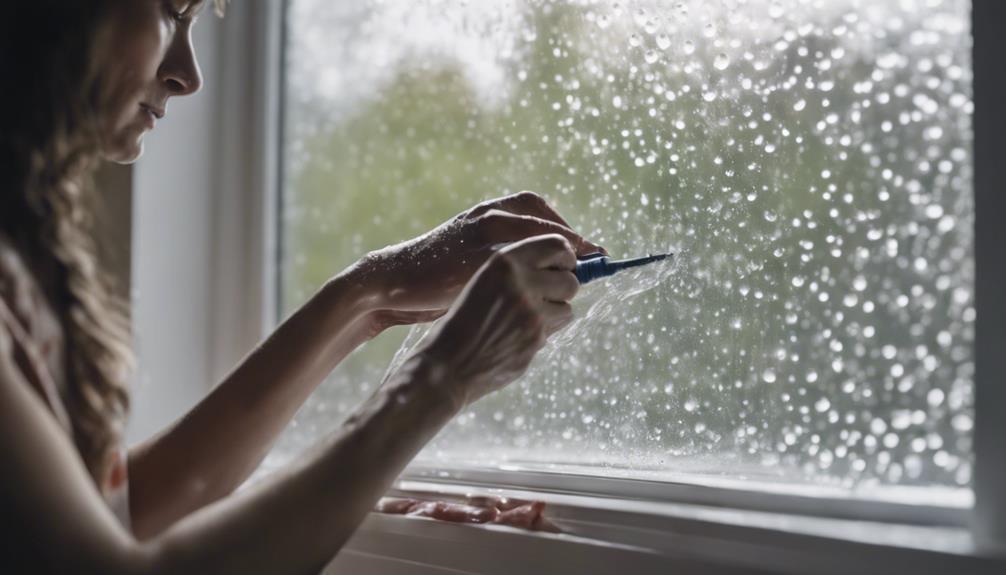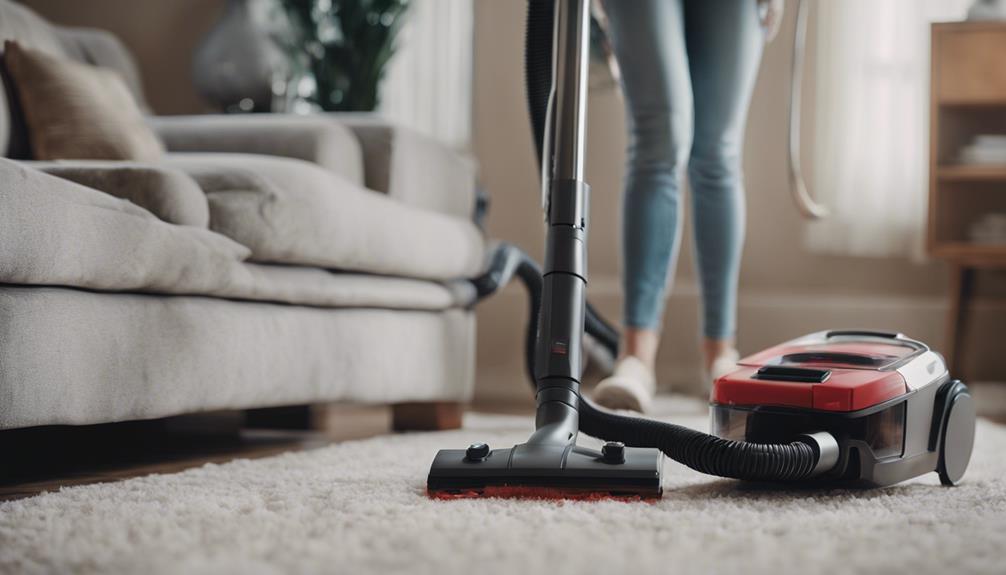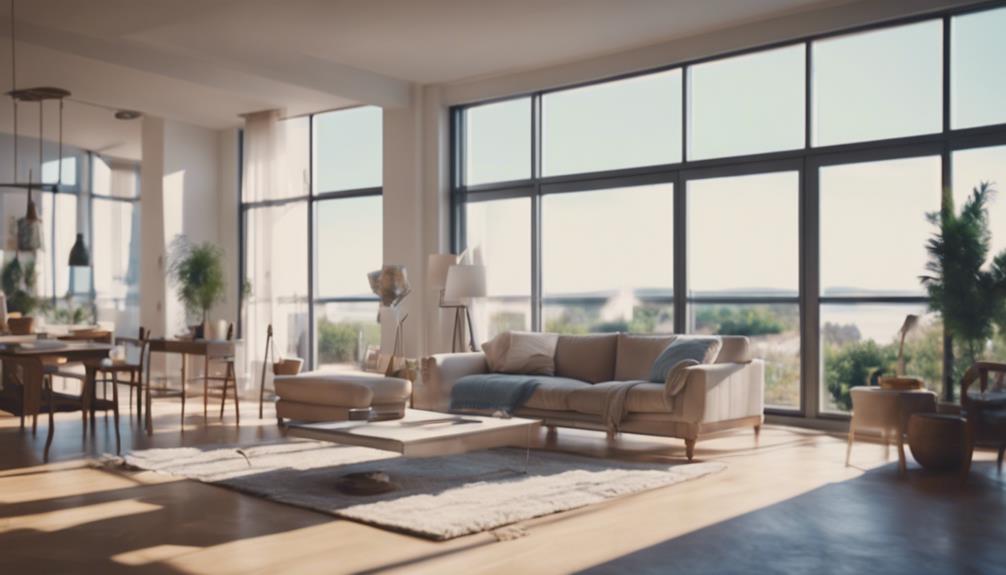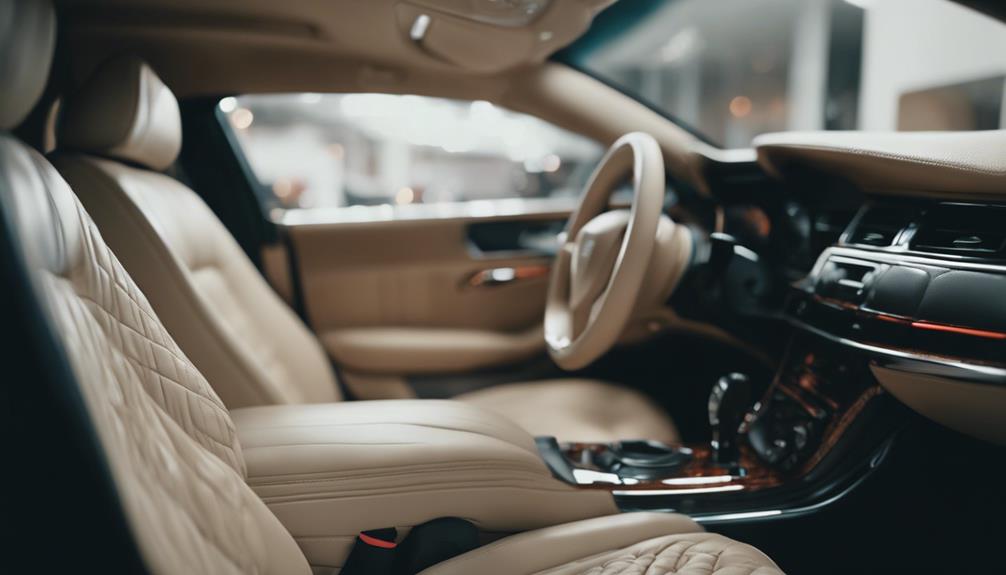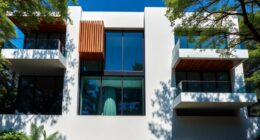You can't use interior silicone outside. Interior silicone isn't tough enough for outdoor challenges. Exterior silicone, with UV inhibitors and weather-resistant elements, is the best choice for outdoor projects. It surpasses interior silicone in durability and standing up to harsh weather. If you're sealing doors or windows against the elements, choose exterior silicone for excellent protection. It's your best bet for lasting effectiveness outside.
Key Takeaways
- Interior silicone lacks UV inhibitors for outdoor use.
- Exterior silicone is formulated for outdoor challenges.
- Harsh outdoor elements impact interior silicone.
- Exterior silicone withstands sunlight, moisture, and temperature.
- Opt for exterior silicone for durability and longevity outdoors.
Interior Silicone Vs. Exterior Silicone
When comparing interior silicone to exterior silicone, the key difference lies in their durability and weather resistance properties.
Interior silicone isn't designed to withstand the harsh outdoor elements like UV rays, extreme temperatures, and moisture. Using interior silicone caulk on doors and windows exposed to outdoor conditions can result in premature deterioration, cracking, and ineffective sealing of gaps and joints.
On the other hand, exterior silicone is formulated with additives that make it highly resistant to outdoor challenges, providing long-lasting protection and superior sealing performance. It's important to choose the right type of silicone caulk based on where it will be used to ensure ideal results and longevity.
Outdoor Conditions and Silicone Use
For outdoor projects, always prioritize using exterior silicone due to its superior durability and weather-resistant properties. While interior silicone serves well for indoor applications, it lacks the necessary features to withstand outdoor conditions effectively.
Outdoor environments expose silicone to UV rays, extreme temperatures, and moisture, which can cause premature deterioration, cracking, and adhesion issues when using interior silicone. In contrast, exterior silicone is specifically formulated with UV inhibitors and weather-resistant components to combat elements like rain, wind, and sunlight, ensuring long-lasting performance outdoors.
Reasons to Avoid Interior Silicone Outdoors
Using interior silicone outdoors can result in premature deterioration and reduced effectiveness due to its lack of UV inhibitors and weather-resistant properties.
When it comes to home improvement projects, it's crucial to consider the specific factors that can impact the performance of the materials you use. While interior silicone serves its purpose well inside your home, its composition isn't designed to withstand the harsh outdoor elements.
Moisture, sunlight, temperature variations, and other outdoor conditions can cause interior silicone to degrade quickly when used outside.
Importance of Using Exterior Silicone
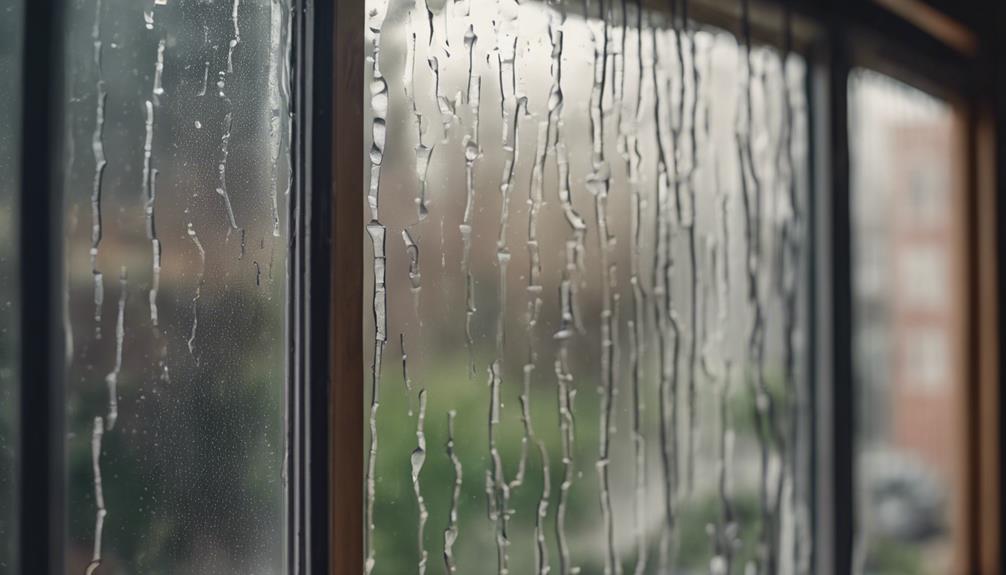
When it comes to sealing your doors and windows against the elements, using exterior silicone is key. This type of silicone is specially formulated to withstand sunlight, moisture, and extreme temperatures, ensuring long-lasting protection.
Outdoor Weather Resistance
For maximum protection against outdoor elements, choose exterior silicone instead of using interior silicone outside. Exterior silicone is specifically formulated to withstand UV rays, temperature changes, and moisture, offering superior weather resistance.
Unlike interior silicone, commonly used outdoors can quickly deteriorate when exposed to sunlight, leading to cracking and fading. Exterior silicone contains essential additives like UV inhibitors and mold resistance properties, vital for outdoor applications, ensuring long-lasting performance.
Using interior silicone outside may result in premature failure, compromising the seal's integrity and potentially causing water damage or air leaks. To maintain proper protection against the outdoor environment, opt for exterior silicone for your outdoor projects to guarantee durability and effectiveness in the face of varying weather conditions.
Prevent Water Infiltration
To enhance structural integrity and safeguard against water infiltration, prioritize the application of exterior silicone for superior protection against outdoor elements.
Exterior silicone is formulated to endure sunlight, rain, and temperature changes, unlike interior silicone. By using exterior silicone, you create a barrier that effectively repels water, shielding your structures from potential damage.
Interior silicone, when exposed to outdoor conditions, is prone to cracking, shrinking, and deteriorating faster, leaving your property vulnerable to leaks and moisture intrusion.
Preventing water infiltration is essential for maintaining the longevity and stability of your exteriors. Make sure you choose the right silicone for the job – one that offers excellent weatherproofing properties to keep your structures safe and secure.
Weatherproofing With Exterior Silicone
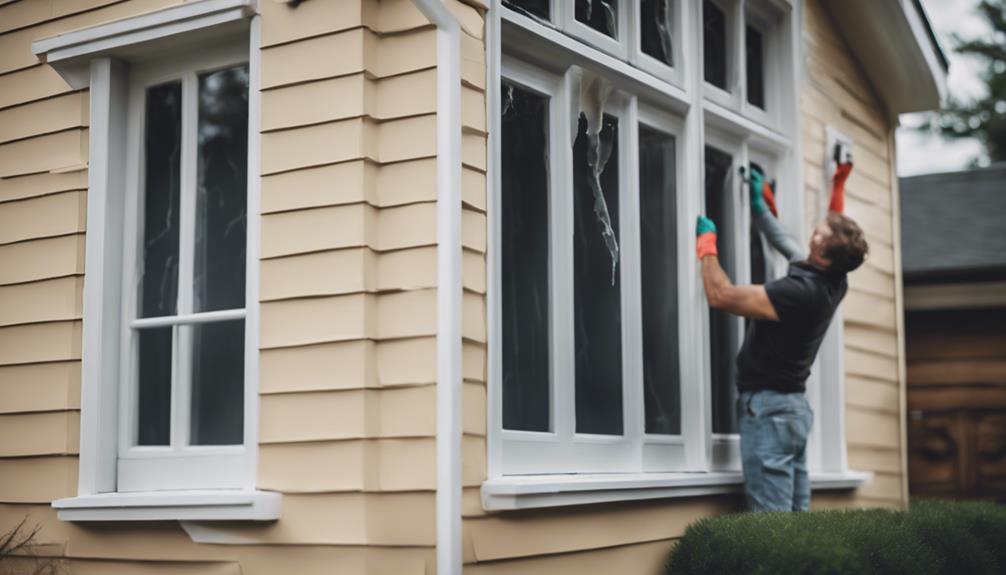
Exterior silicone, tailored for outdoor use, offers superior durability against sunlight, rain, and temperature fluctuations compared to interior silicone. Specifically designed to withstand the harsh outdoor elements, exterior silicone contains UV inhibitors and mold inhibitors that enhance its longevity.
When you use interior silicone outside, it may deteriorate more quickly and become less effective in weatherproofing your outdoor spaces.
To guarantee proper weatherproofing and long-lasting protection, it's vital to opt for exterior silicone for outdoor applications. This specialized silicone is formulated to endure the challenges of the outdoors, providing a reliable barrier against moisture, UV rays, and temperature changes. By choosing exterior silicone, you can safeguard your outdoor projects against the elements effectively.
Potential Risks of Using Interior Silicone Outside
Using interior silicone outside can pose several risks. Exposure to extreme weather conditions may cause quicker deterioration. The lack of UV inhibitors in interior silicone makes it vulnerable to sunlight damage.
Additionally, its inadequate waterproofing performance can result in issues like discoloration, cracking, and reduced adhesion over time.
Weathering and Deterioration
When using interior silicone outside, it quickly deteriorates due to exposure to harsh weather conditions like UV rays, rain, and temperature fluctuations. Unlike exterior silicone designed to withstand outdoor elements, interior silicone lacks the necessary additives to endure these challenges. This can lead to cracking, shrinking, discoloration, and loss of adhesion over time, compromising the seal it provides.
Interior silicone simply isn't equipped to handle the demands of the outdoors like its exterior counterpart. To guarantee long-lasting performance and durability in challenging weather conditions, it's best to opt for exterior silicone for outdoor projects. By choosing the right silicone for the job, you can protect your surfaces effectively and avoid the pitfalls of using interior silicone outside.
Inadequate Waterproofing Performance
Inadequate waterproofing performance becomes a significant concern when interior silicone is utilized in outdoor settings where it may be exposed to harsh weather conditions. To better understand the risks involved, consider the following:
- Limited Weather Resistance: Interior silicone lacks the necessary properties to withstand outdoor elements effectively.
- Potential Degradation: Exposure to UV rays and moisture can cause interior silicone to degrade quickly.
- Increased Vulnerability: Cracks, leaks, and reduced effectiveness are common issues when using interior silicone outside.
- Premature Failure: By using interior silicone in outdoor applications, you risk compromising the waterproofing performance, leading to premature sealant failure.
To guarantee long-lasting waterproofing protection, it's advisable to opt for exterior silicone specifically designed for outdoor use.
UV Degradation Concerns
Exposure to sunlight poses a significant risk to interior silicone when used outside due to its lack of UV inhibitors, leading to potential degradation and reduced effectiveness. Without the protection offered by UV inhibitors, interior silicone sealants are prone to breaking down when exposed to the sun's rays.
This degradation can result in cracks forming in the silicone, compromising its ability to maintain a reliable seal. Additionally, interior silicone may struggle to withstand outdoor elements like rain, snow, and temperature fluctuations, further accelerating its deterioration.
To avoid premature aging and guarantee long-lasting performance, it's essential to use exterior silicone specifically formulated to resist UV degradation for any outdoor sealing projects.
Longevity and Effectiveness of Exterior Silicone
For exterior applications, the longevity and effectiveness of silicone are essential considerations due to its specialized formulation for outdoor durability. When it comes to using silicone caulk outside, here are some key points to keep in mind:
- Specific Formulation: Exterior silicone is designed to withstand outdoor elements such as UV rays, extreme temperatures, moisture, and weathering, ensuring it holds up well in various conditions.
- Durability Features: Unlike interior silicone, exterior silicone contains additives and features that enhance its durability, making it more suitable for long-lasting performance in outdoor settings.
- Flexibility and Adhesion: Exterior silicone maintains flexibility and adhesion in outdoor environments, ensuring a longer lifespan and better protection against cracking, shrinking, or peeling.
- Prevention of Deterioration: Choosing exterior silicone for outdoor applications is essential to prevent quicker deterioration and reduced effectiveness that can occur when using interior silicone outside.
Tips for Choosing the Right Silicone Caulk
Wondering how to select the right silicone caulk for your project? When choosing silicone caulk, it's important to opt for exterior silicone for outdoor applications. Look for products specifically designed to withstand harsh outdoor conditions, as they contain additives like UV inhibitors and weather-resistant properties that interior silicone lacks. These additives are vital for protecting against elements like UV rays, moisture, and temperature fluctuations, ensuring better durability and long-lasting performance.
Consider the specific needs of your project when selecting silicone caulk. If you're sealing areas exposed to direct sunlight, heavy rain, or extreme temperatures, prioritize a high-quality exterior silicone for maximum protection. Make sure to check the product labels for indications that it's suitable for exterior use. Additionally, choose a silicone caulk that offers good adhesion to various outdoor surfaces to prevent potential failure over time.
Advantages of Professional Exterior Caulking
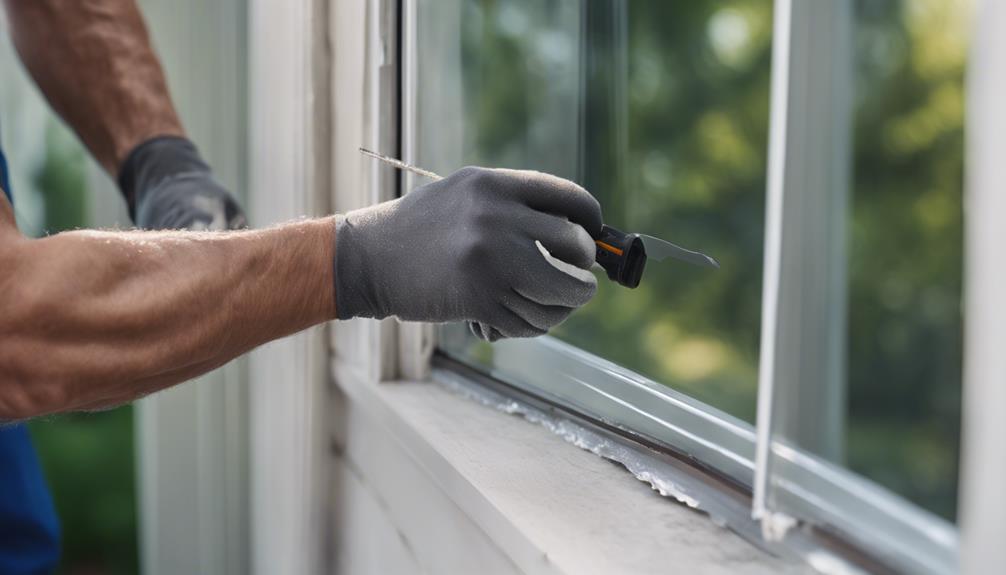
Consider the benefits of hiring professional exterior caulking services for a superior and enduring seal on your outdoor surfaces. When it comes to sealing cracks and joints outside your home, expert caulking can make all the difference. Here are four advantages of opting for professional exterior caulking:
- Durability: Professional exterior caulking ensures that cracks and joints are properly prepared, leading to a long-lasting seal that can withstand various weather conditions.
- Expert Application: Professionals use advanced techniques and tools to apply caulking effectively, ensuring a tight seal that keeps moisture and air out.
- Specialized Caulks: Certain challenging caulks are best applied by professionals who've experience with a variety of caulking materials, ensuring excellent results.
- Quality Assurance: The cleanliness of the application area and the skill of the caulking expert are essential for the caulk's longevity, providing you with peace of mind that the job is done right.
Hiring professional contractors for exterior caulking guarantees a high-quality sealing job for your outdoor surfaces.
Frequently Asked Questions
Can Indoor Silicone Be Used Outside?
You should avoid using interior silicone caulk outside because it lacks the durability needed for outdoor exposure. Interior silicone may deteriorate quickly when faced with sunlight, rain, and temperature changes.
It's best to opt for exterior silicone caulk specifically designed to withstand harsh outdoor conditions. By selecting the right product for your outdoor projects, like exterior silicone, you guarantee long-lasting performance and proper sealing, protecting your home from the elements.
Can You Use Kitchen and Bath Silicone Outside?
You should avoid using kitchen and bath silicone outside as it's not designed to withstand outdoor elements like sunlight and extreme temperatures. This type of silicone lacks the necessary UV inhibitors and weather resistance for outdoor use, which can lead to issues like cracking and reduced effectiveness in sealing gaps.
Opt for silicone caulk specifically made for exterior applications to guarantee durability and effectiveness in outdoor environments.
Can All Silicone Be Used Outdoors?
You should use exterior silicone caulk for outdoor projects. Interior silicone lacks additives to withstand outdoor elements, leading to premature deterioration.
Selecting the right caulk guarantees a lasting seal against UV exposure and temperature changes. Protect your outdoor surfaces by choosing a silicone caulk specifically designed for exterior use.
It's a simple step that can make a big difference in the longevity and effectiveness of your outdoor projects.
What Is the Difference Between Interior and Exterior Silicone?
When differentiating between interior and exterior silicone, keep in mind that interior silicone is crafted for indoor settings with controlled temperatures.
Exterior silicone, on the other hand, boasts UV inhibitors to combat sunlight damage and may even include mold inhibitors for added moisture protection.
The choice between the two hinges on the location and exposure to elements. So, remember to select the right silicone caulk tailored to your specific needs for best performance.
Conclusion
To sum up, using interior silicone outside is like wearing flip flops in a snowstorm – it's just not going to hold up.
Exterior silicone is specifically designed to withstand outdoor conditions and provide long-lasting weatherproofing.
By selecting the appropriate silicone caulk and considering professional exterior caulking services, you can guarantee your outdoor projects are protected and looking great for years to come.
Don't let your hard work go to waste – invest in the right silicone for the job!
